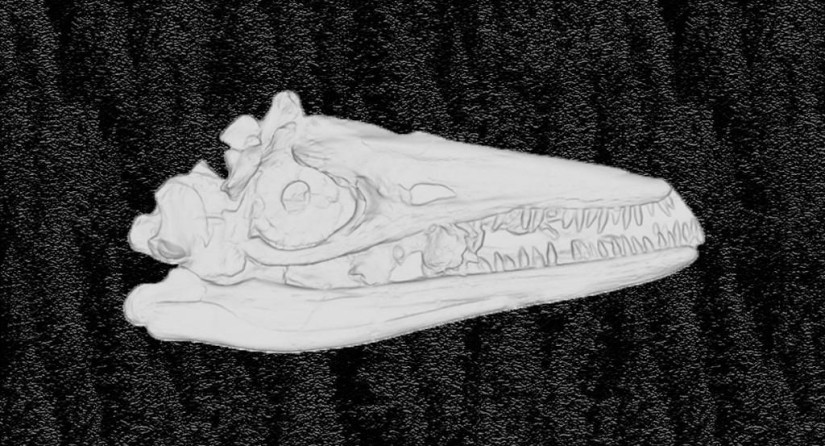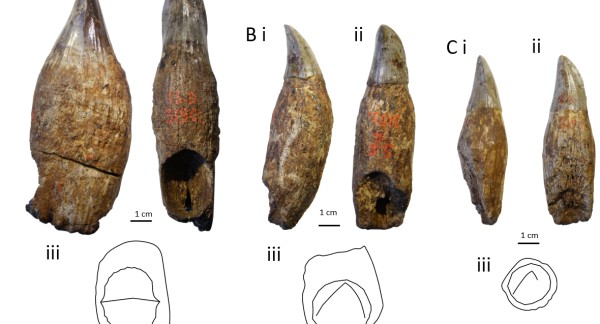Predatory adaptations in the large Jurassic marine reptile Temnodontosaurus

Palaeontologists have found among Temnodontosaurs - Jurassic-era sea predators - that not all species were equally well adapted to catching large prey. This indicates that these contemporaries each occupied their own ecological niche and thus avoided competition. The study included fossils from our collections.
Large marine predators are some of the most iconic animals of the Jurassic, captivating the public with the terror of what could be lurking under the water. Skulls of some of these animals were some of the first fossils to be found, and two hundred years on, they are still revealing their secrets.
The ichthyosaur Temnodontosaurus is one such large predatory marine reptile, known from fossils from across western Europe. Some individuals grew to enormous sizes (with skulls nearly 2 metres in length) and others show teeth with distinct cutting edges, leading to the assumption that it was a top predator – however, the ecologies of the seven currently recognised Temnodontosaurus species have never been investigated in detail.
New research in Journal of Anatomy, carried out by Rebecca Bennion as part of her PhD at the University of Liège, has cast light on the ecology of this enigmatic genus. This study looked at specimens from across western Europe, including some from the collections of the Royal Belgian Institute of Natural Sciences, and combined 3D scanning with detailed morphological comparisons and SEM (scanning electron microscope) photography.
A whole range of teeth

One of the key findings was the first occurrence of serrated teeth in ichthyosaurs. “These serrations are called ‘false serrations’ – they are not regular distinct units along the cutting edge, but irregular distortions of the edge caused by ridgelets on the other surfaces of the tooth crown crossing over the cutting edge,” explains Dr Bennion. The study also showed the presence of heterodonty (a change in tooth shape morphology from the front of the jaw to the back), which may have been an adaptation for processing larger prey.

The range in tooth morphologies and different skull adaptations seen across the different species of Temnodontosaurus suggest prey was caught and processed in different ways. Not all the species have cutting edges (serrated or not), and some appear less well adapted to catching larger prey. As many of the different species coexisted in the Lower Jurassic seas, this range of adaptations is important evidence into how these animals coexisted by dividing ecological niches, to avoid competition with each other and with other ichthyosaurs of the time.
“With new cutting-edge technologies such as 3D scanning and SEM imaging we are able to reveal new information about how these animals lived,” explains Valentin Fischer, lecturer at the University of Liege and supervisor of the study, “Our collaborations with other labs in Belgium and abroad are enabling us to understand much more fully how the large predator role in marine ecosystems has changed through time.”
Based on a news article by Université de Liège.





